How green are our golf courses?
With half of the world’s population currently on ‘hold’ due to Covid-19, nature is prospering and our consciousness for preserving it has never been so strong. Before we golf again, we’ve looked into the different ‘eco-friendly’ initiatives taken by our local golf courses:
The biodiversity
Our region benefits from an exceptional natural heritage and an incredible biodiversity with extensive woodlands, the largest surfaces of dunes in Europe and varied landscape.
The weather conditions are not only perfect for golf, it is also a strong asset for golf course maintenance and preservation. We experience mild temperature with a direct exposure to the breeze of the Atlantic, the protection of 750 km of dunes combined with good levels of rain and humidity all year around.
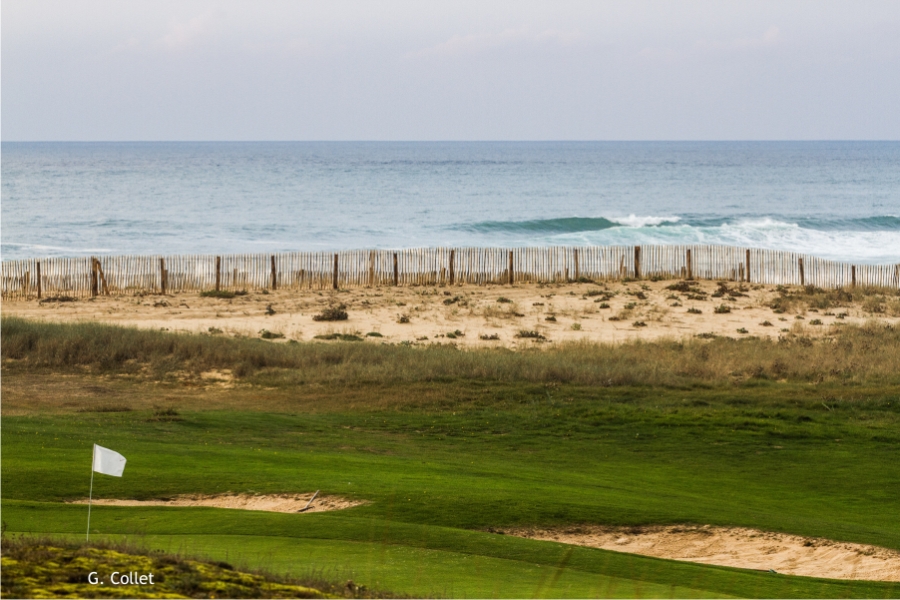
Golf de Moliets © G Collet
No surprise to see that the oldest golf courses, built by the British in the traditional style, used the natural shape of the land and took advantage of our rich soil such as Pau Golf Club built in 1856, the oldest golf course on continental Europe. More recent golf courses have made the conscious decision to go back to this pre-requisite. Grand Saint-Emilionnais Golf Course, designed by Tom Doak in 2016, has created a course gently rolling on the landscape of Saint-Emilion, using his legendary minimalist style, with a complete preservation of the natural scenery.
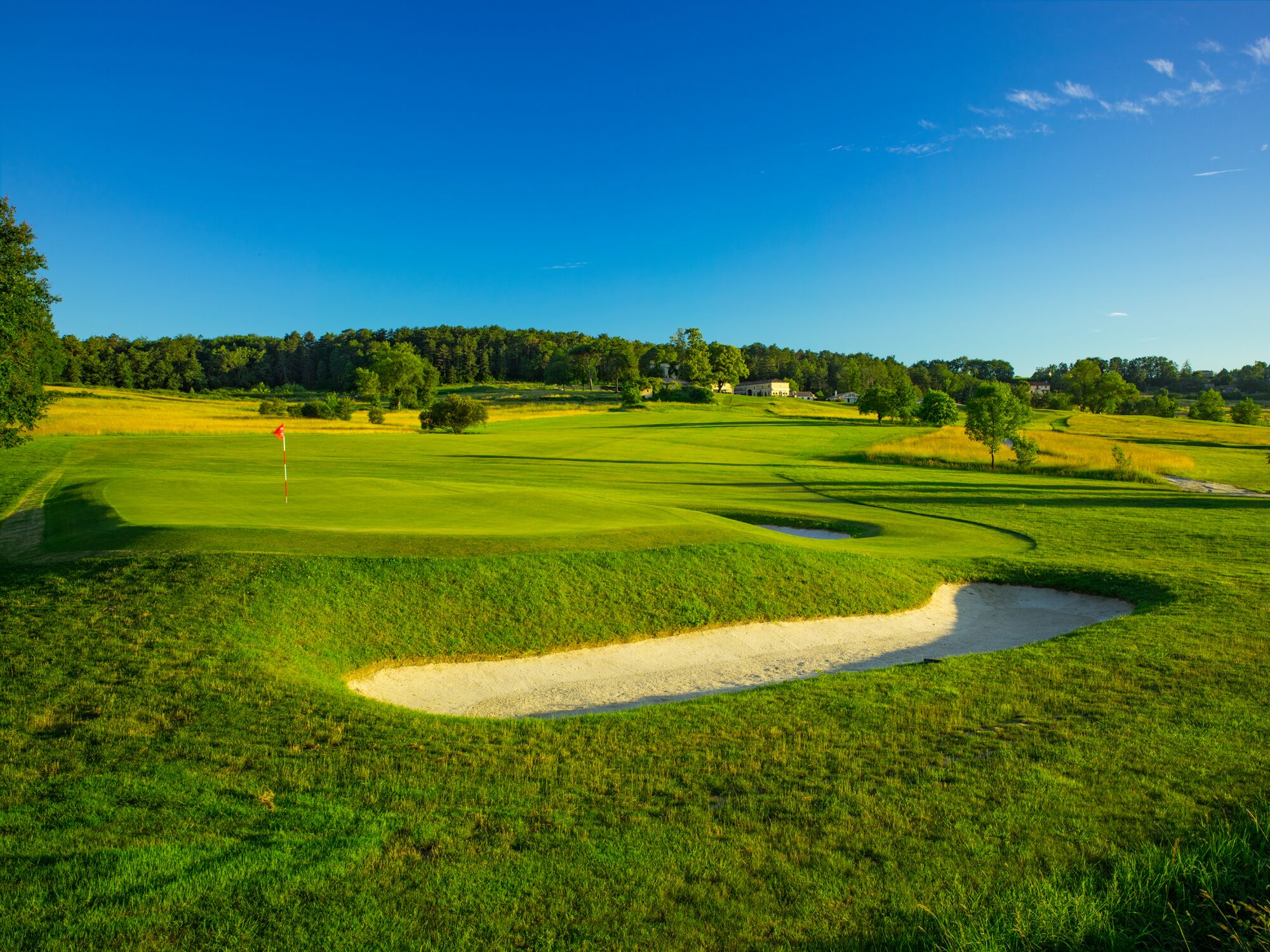
Grand Saint-Emilionnais © Golf Club Larry Lambrecht
Water management
The last few summers have put our golf courses to the test with exceptional drought and heatwaves during the summer months. Irrigation and water management is a shared commitment by our golf courses. Some, like Biarritz Le Phare, have gone as far as publishing an annual report on their water usage to show their commitment and policies. Others have invested in the construction of water retaining pools such as The Nivelle golf course in Ciboure in the Basque Country or the Real Golf de Pedreña, Seve Ballesteros’ home course, where a lake was built a few years ago near hole 2, at the lowest point of the golf course, from which irrigation of the entire golf course can be managed.
Grand Saint-Emilionnais Golf Course incorporated 2 natural lakes of 3 hectares into the design of the course to ensure that the course is self-sufficient with water consumption all year around. Golf Les Vigiers have taken advantage of a nearby hill dam to collect rain and drain water from the land and nearby rooves.
Golf de Moliets, in Les Landes, has signed an agreement with the French Golf Federation and Ministry of The Environment to decrease their water consumption by 30% thanks to the investment in a computerised water management system with an efficient pumping station.
Course maintenance
As golf lovers, we know how challenging it is for green-keepers to keep our favourite golf courses in good shape. We also know that non-golfers often think that golf course maintenance requires the use of harmful chemicals to keep greens in pristine condition.
In the last decade, all our golf courses have drastically reviewed the way they maintain their greens by considerably limiting the use of phytosanitary products. To do so, they intervene on courses manually more regularly, plant more resistant grass and whenever possible use organic products.
Limiting mowing is also a measure to preserve shelter for fauna and preserve flora on our golf courses. Educating our golfers that our fairways change colour and aspects according to seasons is also part of the role of our golf courses staff.
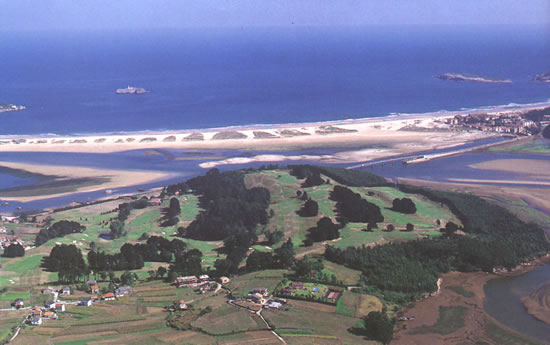
Real Golf de Pedreña © Real Golf de Pedreña
Using hybrid machines to avoid oil leakage, like at Golf Les Vigiers, is also a conscious decision to respect the natural environment and ensure more peaceful surroundings. Investing in long-term replanting plants of low maintenance trees has become the norm. For instance, at Golf Les Vigiers a series of fruit trees have recently been planted with a view to preserving the golf course and château surroundings.
Golf de Moliets has been assisted by the Environment Commission of the French Federation of Golf to make major changes on their course. In 2019 they received the Bronze Label for applying the technical and scientific guidelines from the National Natural History Museum.
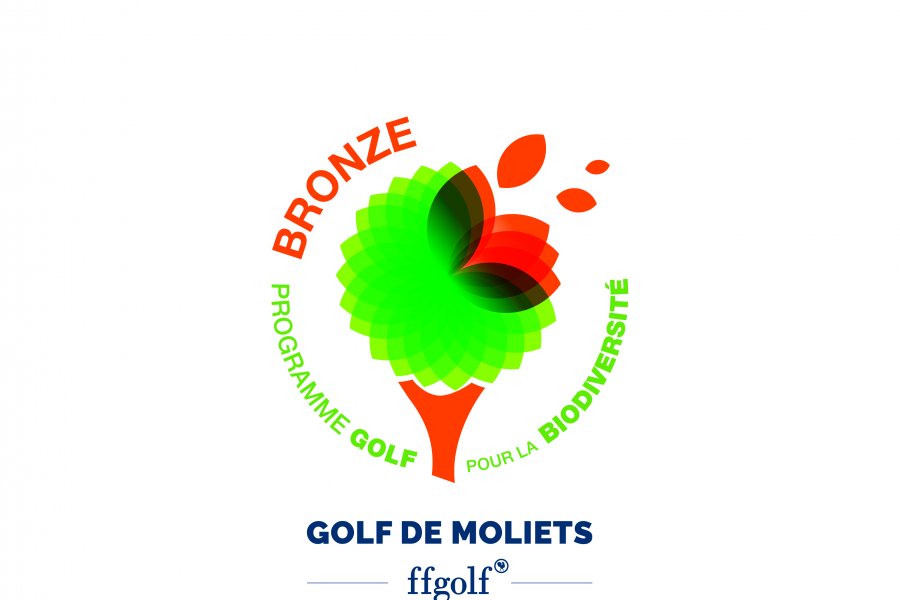
Golf de Lacanau have gone a step further by obtaining the eco-friendly golf Certification by ECOCERT *. Over a few years, this beautiful course set in a pine forest near the Altantic shores, one hour from Bordeaux, has undertaken major changes to follow the drastic measures required by the certification.
For Alexis Marchive, director of the golf course, this is a management tool and major factor of pride and motivation for the entire green-keeping team who has complied with strict standards : no human or product intervention in the non-playing areas, a water saving policy which forbids the water withdrawal from non-renewable resources, attention to the natural soil which is preserved as living environment with regular monitoring and strict measures to preserve the bio-diversity in the non-playing areas. The golf course is audited to ensure that each standard is met. One of the latest measures has been the spreading of grinding chips on the golf course.
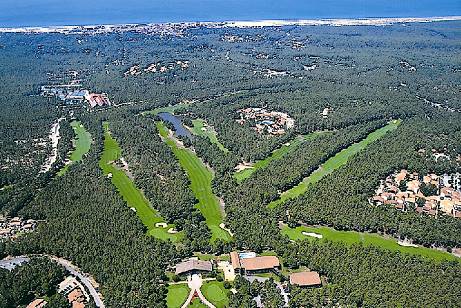
International Golf de Lacanau © UCPA
In line with the old tradition at Saint-Andrew’s, Grand Saint-Emilionnais Golf Course opens every year its course to a local herd of sheep to clip their course. According the Kristel and Andre Mourgue d’Algue, co-owner of the course, sheep are slow and as meticulous animals ; they graze the grass without tearing off the root, thus ensuring a regular cut and better preservation and lower maintenance of the plant.

Grand Saint-Emilionnais Golf Club © Grand Saint-Emilionnais Golf Club
These are examples of how our local golf courses are making great strides towards making golf, behind the scenes, truly a nature-compatible idea ! We can wait to see how nature and green keepers have taken good care of our favourite local golf courses soon !
References :
http://sciencepress.mnhn.fr/en/periodiques/naturae/2019/8
https://www.golfplanete.com/actualites/le-dossier-golf-et-environnement-1ere-partie-le-constat/
